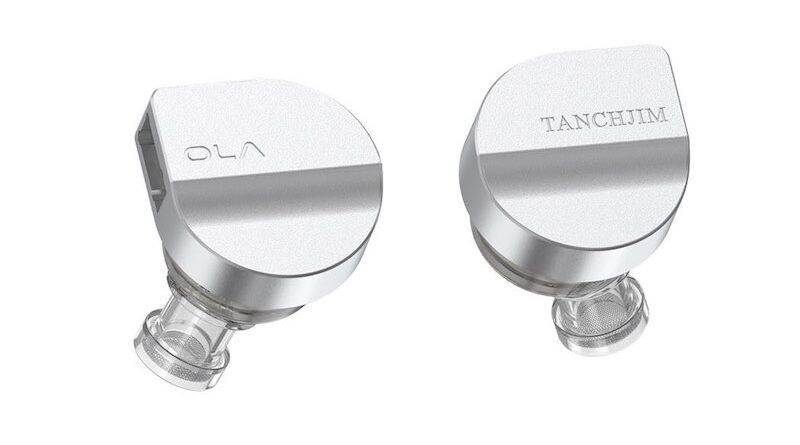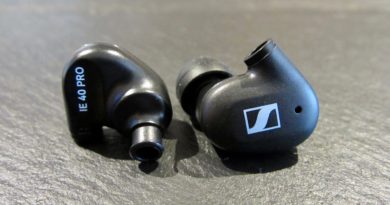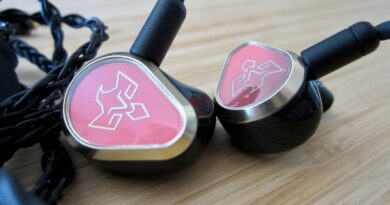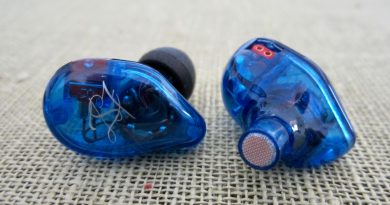Tanchjim OLA Review – Carnivores Beware
Normally, another $40 single DD wouldn’t elevate my blood pressure. However, Tanchjim’s prior releases like the $180 Oxygen have garnered a lot of acclaim, so when the OLA showed up unexpectedly, I dug in eagerly.
Elaborately packaged, with extensive marketing materials espousing particularly baffling gobblygook about “DMT4 architecture” and “FEA finite element analysis;” I do find their slogan “Faithfully Recreating the Original Sound” to be better than most of its ilk.
The aluminum and plastic shells look pedestrian but are extremely lightweight and comfortable, with a flat, compact shape and raked nozzles that fit snugly within the concha and provide for excellent seal and good isolation. (These would work well for sleeping).
I like the silver-plated microphonic-free Litz cable, which has useful memory. Not quite as sensitive as the (126dB) spec would indicate, although they were capably driven with just my LG and I didn’t hear any advantage when paired with a dongle.
Specifications:
Brand | TANCHJIM OLA
Sensitivity | 126dB/Vrms
Impedance | 16± 10%
Frequency range | 7-45kHz
THD | < 0.3%
Driver | 10mm dynamic driver
Cable | 1.25M 3.5- 0.78PIN
Technology | DMT 4
Cable Material | Litz crystal copper silver-plating
Diaphragm material | polymer grapheneModel | OLA
Tested at | $39.99
Purchase Link| SHENZHENAUDIO
While prior Tanchjim releases have generally been touted as warm and Harman-tuned, in the sense of having elevated midbass and upper mids, the OLA were surprisingly bright and bass-shy. To my ears, they aspire to that “Japanese tuning;” like the Kumitate and Ocharaku I’ve heard they have considerable treble extension and some added energy in the midrange, which notably emphasizes female voices.
Even with the “bass-enhanced” eartips, subbass is conspicuously lacking in impact; such lowend as exists is presented mostly as soft and very lean midbass. Soundstage is fairly rounded and within your head; performers tend to be bunched towards the middle of the stage. They do show considerable microdetail; drumheads and cymbals have good snap. Using foams adds bass texture but not really depth.
The OLA does avoid the coarseness or shrillness of cheap BAs; they are more coherent and truer-to-source than bawdier, bigger-sounding peers like the KZ ZS10P and they have a more natural timbre than the overpraised Tin T2.
These might have considerable appeal to fans of this more “reference” tuning. However, I cannot get past the OLA’s lack of the lower octave—they simply sound incomplete, like well-resolving surround speakers in need of a sub. For the same money, the Blon BL03 or KBEAR KB04 sound weightier and more engaging, if not necessarily more revealing.
Bottom line: not my cup of Sake, though well-designed and not without their sonic virtues.
Disclaimer: Got these unsolicited from SHENZHENAUDIO.








Don’t know if you’ve had a chance to try the OLA Bass version – Does it fix the the issues you found with the low end of the spectrum?
Haven’t heard the Ola Bass yet, but will likely do so at some point–the original version had enough finesse to justify further listening. LJ